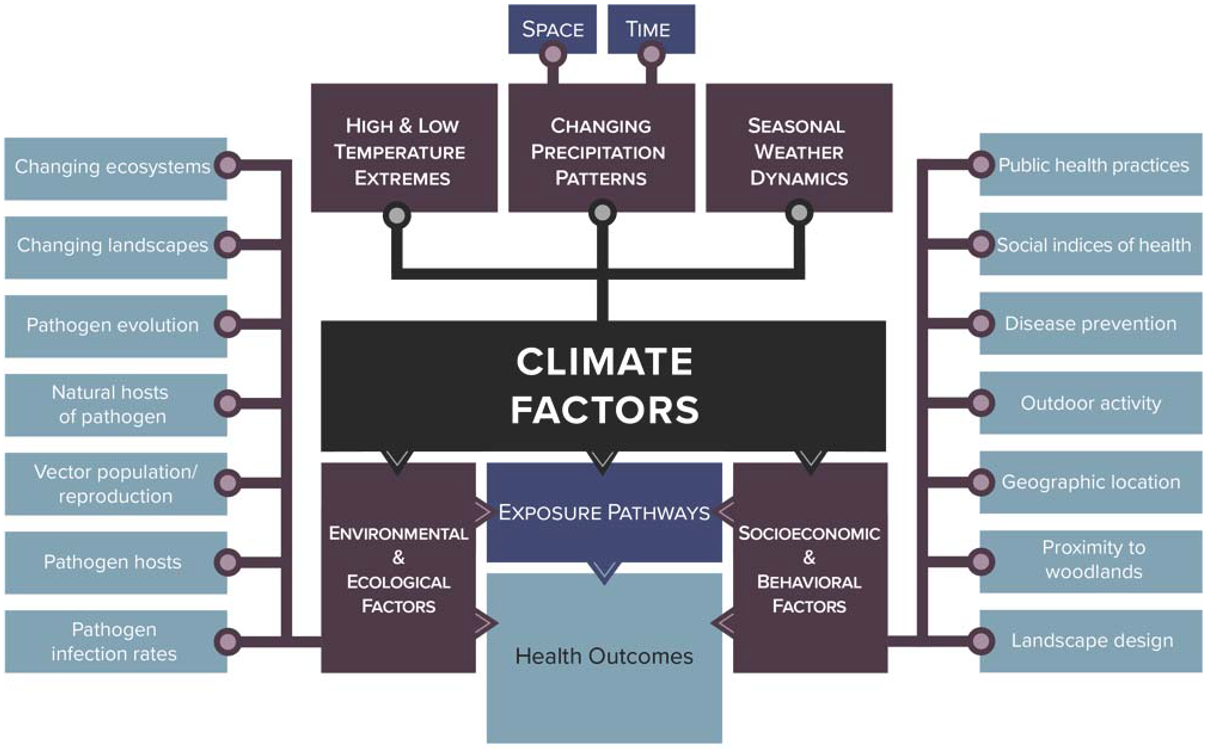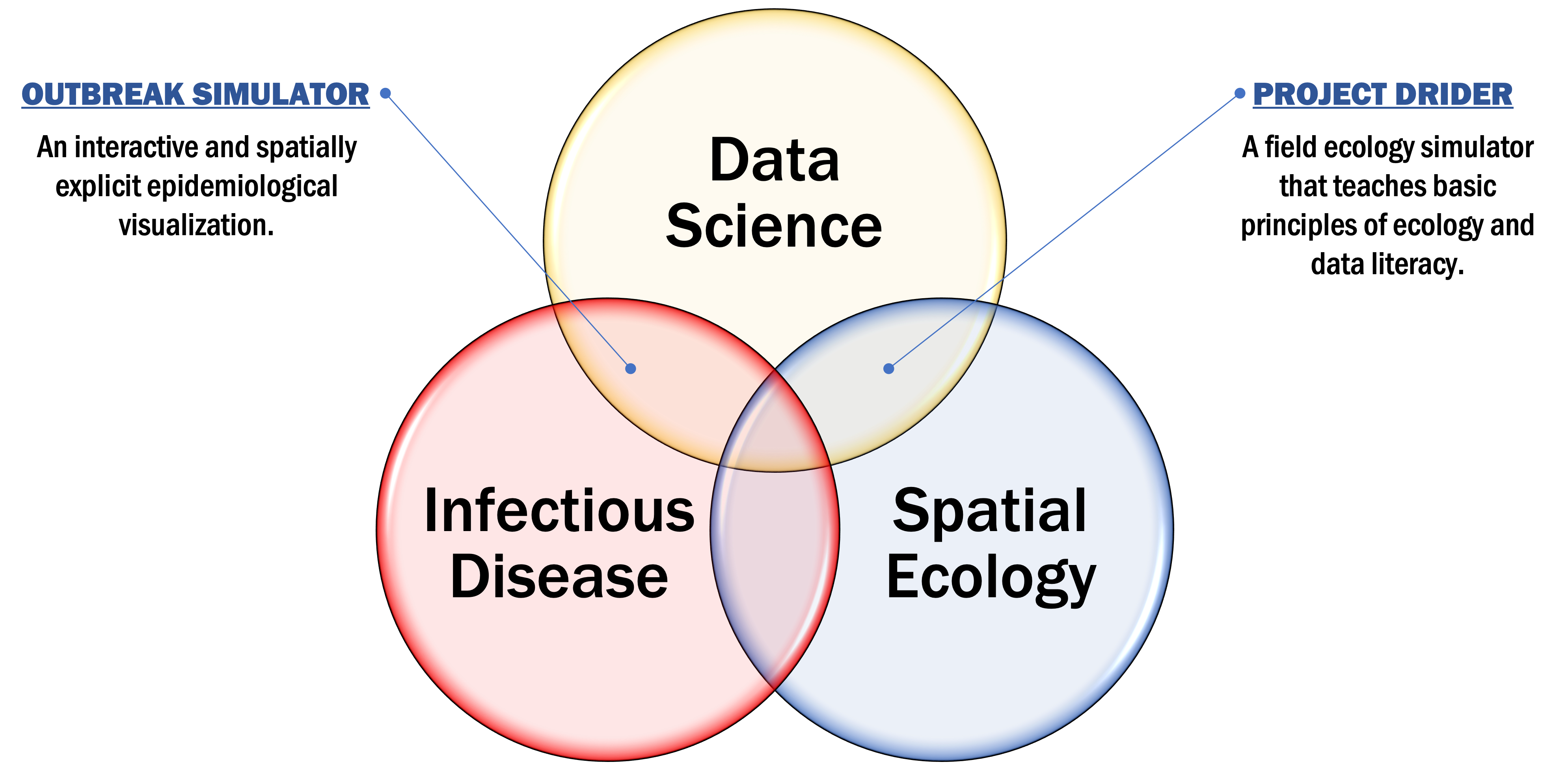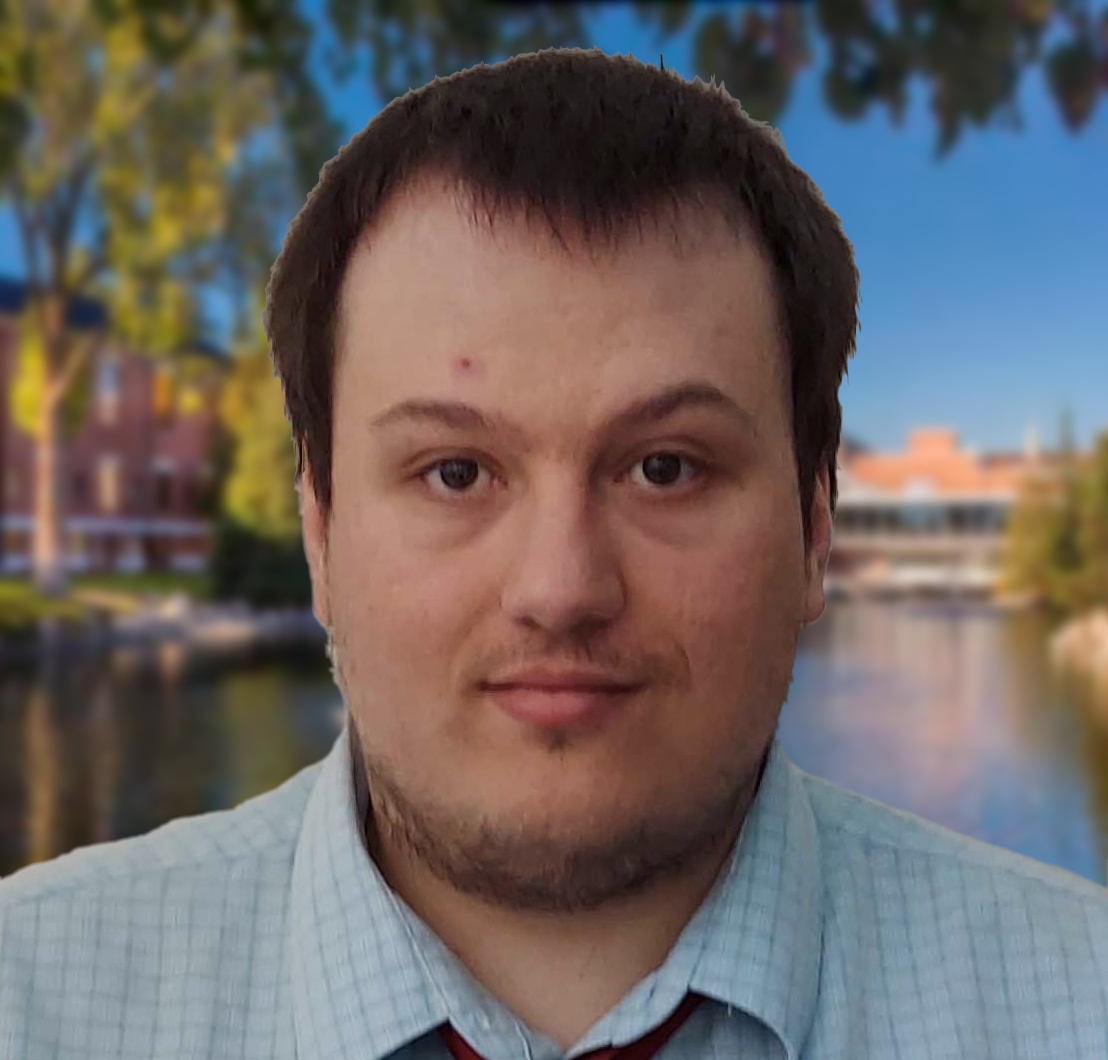Dev Team
Funding
Outbreak Simulator is a component of the education and outreach efforts of the TickBase project. Tickbase is an NSF funded project that seeks to identify critical factors for natural and human driven tick migration and tick-borne disease spread in the western US. The central hypothesis is that climate change will increase the prevalence of tick-borne diseases throughout the western US. To test this hypothesis, the project brings together data scientists, biologists, geospatial modelers, and mathematicians from the University of Idaho, the University of Nevada Reno, Dartmouth University, and New Mexico State University. These researchers collaborate on interdisciplinary projects to study the complex interactions among climate models, tick biology, spatial ecology, socioeconomics, and human behavior.

When we develop educational games and simulations for projects like TickBase, we first consider the research from a very broad perspective. In this case, we concluded that the project brings together research from Infectious Disease, Spatial Ecology, and Data Science. We therefore developed our outreach and educational materials to focus on the skills and knowledge inherent to these disciplines. See the Education and Outreach section to learn more about our plans and activities for Outbreak Simulator in K-12, undergraduate, and public health settings.

Developers
Landon Wright
Erik Marsh

Erik is currently a first-year Master’s student in Computer Science at the University of Nevada, Reno. He received his B.S. in Computer Science and Engineering from the University of Nevada, Reno in 2022. Here, he primarily works on keeping Drider running smoothly, particularly the networking aspects.
Joshua Dahl

Joshua Dahl is currently a student at the University of Nevada, Reno. He is pursuing a BS with a major in Computer Science and Engineering and a minor in Mathematics. When he graduates he is planning on pursuing a Ph.D. in Computer Science where he hopes to continue to make contributions to both the fields of computer graphics and programming languages.
Due to the rapidly evolving nature of the Virtual Reality field, many frameworks for multiuser interaction have become outdated, with few, if any, designed to support mixed virtual and non-virtual interactions. We have developed uMuVR, a framework that lays an extensible and forward-looking foundation for the development of mixed interactions based upon a novel method of ensuring that inputs, visuals, and networking can all communicate without needing to understand the others’ internals. This framework also provides utilities for representing user avatars in a physicalized manner while supporting a range of different input methods. We tested this framework in the development of several applications and show that it can easily be adapted to support application requirements it was not originally designed for.